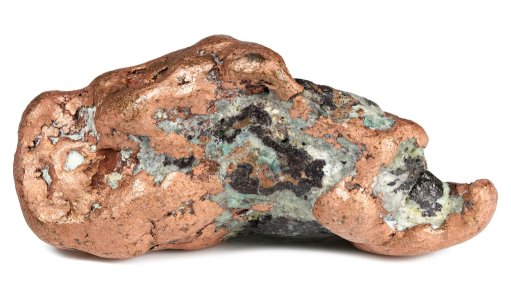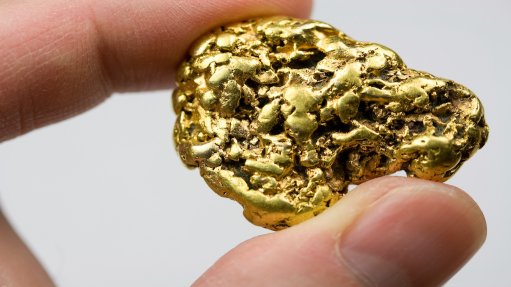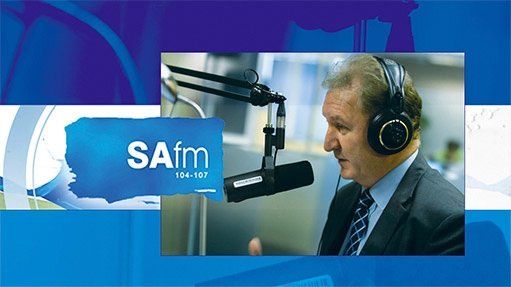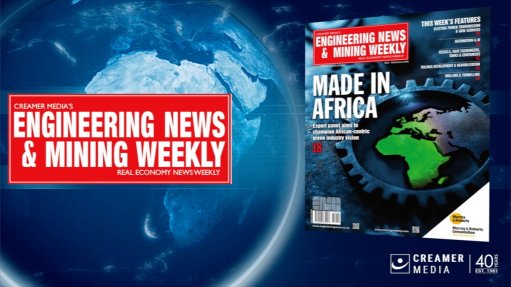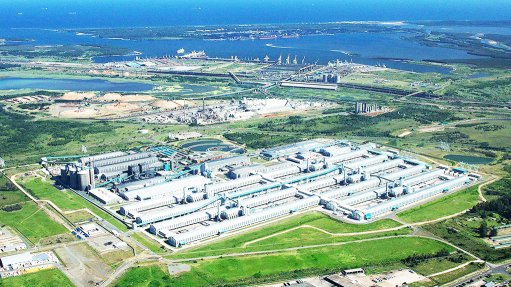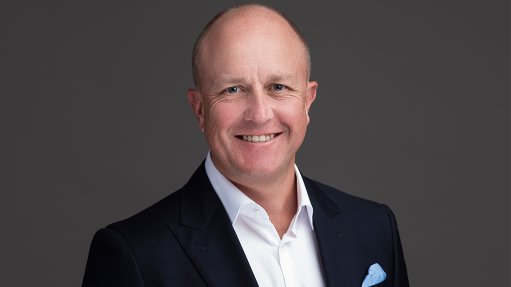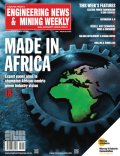Miners gather amid surging demand for critical minerals and fiercely rising ESG demands
Amid the global transition to renewable energies and the effects of strong commodity prices and supply crunches, there is a scramble to ensure security of supply of critical and battery minerals in Africa.
These factors heighten the importance of African mining and the role of the Investing in African Mining Indaba – to be held at the Cape Town International Convention Centre from May 9 to 12 – states Indaba organiser Hyve Group head of content Tom Quinn.
“For all the negatives of the pandemic, it’s created opportunities through increased online consumerism, which comes on the back of the uptake in electric vehicles, energy storage and growth in renewables investment. These factors are all linked to make these minerals valuable resources.”
There have been price increases in commodities, such as cobalt and copper, from the Democratic Republic of Congo and Zambia, for example, and platinum-group metals (PGMs) from South Africa.
Nickel has also enjoyed a significant surge in price, which forced commodities entity the LME to suspend trading in March to drive the price down.
The increased interest in African countries supplying these commodities has encouraged Zambian President Hakainde Hichilema to attend the Mining Indaba.
“He’s looking to reset the relationship between miners and the Zambian government, and provide clarity on the country’s mining code to drive foreign investment. The government has planned an announcement before the Indaba, but the President will be engaging with media to discuss specifics at the Indaba.”
Quinn adds that Botswana President Dr Mokgweetsi Eric Keabetswe Masisi will also attend the Indaba.
“As well as heads of State and over 35 Ministers, the Indaba will have the world-exclusive debut at a major event from Anglo American’s new South African CEO, Duncan Wanblad, who will underpin the critical role of mining in the energy transition through his keynote address on The Power of Mining.”
Quinn adds that Wanblad will be joined during the week by executives from the group, including South Africa board chair and current president of Minerals Council South Africa Nolitha Fakude, new Kumba Iron Ore CEO Mpumi Kikalala and Anglo Platinum CEO Natscha Viljoen.
Transition and ESG Investments
Hyve Group portfolio director Simon Ford says one of the key themes that emerged from COP26 last year was the focus on transitioning to renewable energies and the role that Africa can play in providing the minerals and metals for this transition.
Quinn comments that – in line with the Glasgow Pact, which saw countries committing to reducing emissions and combating climate change – environmental, social and corporate governance (ESG) issues are a key theme for the Indaba this year.
The event has also received a significant number of registrations from the global investment community, which also has a renewed focus on ESG performance.
The Indaba will host financial organisations, such as Standard Bank, Nedbank, Absa and Investec, the African Development Bank and the World Bank, as well as other attendees from the international finance community, to participate and consider new opportunities, especially in the battery metals sector.
Hyve, through its programming, has encouraged Indaba attendees to discuss how ESG is being implemented in their operations and how this might affect future investment decisions.
Important industry bodies including the International Council on Mining and Metals, the Extractive Industries Transparency Initiative (EITI), the United Nations and the World Gold Council will all feature in panel sessions clarifying the relationship between ESG, investors and the mining industry.
“These decisions are impacted on by incidents such as miner Rio Tinto’s destroying Aboriginal rock shelters in Western Australia last May. A Rio Tinto delegation is attending this year, including new CEO Sinead Kaufman, and we’re working on a briefing with them to discuss the report Rio Tinto made public earlier this year regarding its in-house operations,” says Quinn.
This report also discusses sexual harassment and other ESG-related issues.
Quinn commends the miner’s willingness to transparently publish the report, which also discusses the steps the company will take to resolve its ESG challenges.
He highlights that the Indaba will host a main-stage conversation on artisanal mining, as well as a main-stage panel convened by Women in Mining to discuss COP26 outcomes as they relate to decarbonisation, the role of women in mining and transitioning to renewable energies.
The Mining Indaba will also feature a panel that includes diversified major Anglo American’s examining stakeholder relationships involving Aboriginal communities in Australia, and how mines can be designed better, with the long term in mind, to ensure that they do not have a detrimental environmental and social impact.
“This panel will examine the planning that goes into the end-of-term mining life cycle, and opportunities to make something more with former mining towns, without mining communities migrating,” states Quinn.
Hydrogen and Energy Projects
Hydrogen will also feature at the Indaba, as building a hydrogen economy can contribute to supporting the energy transition and, therefore, ESG goals.
Quinn adds that South Africa, with its abundance of PGMs, has a significant opportunity to support a hydrogen-based transition; this is currently supported by economic sanctions against Russia – one of the key producers of PGMs – because of Russia’s invasion of Ukraine in February.
“We have a discussion session about hydrogen on Day 1 at the main stage, and we have an energy transition session at the beginning of Day 2. One just needs to look at Anglo’s financial and production results to see how PGMs have contributed to its profits, and how vital they are to the hydrogen economy. Platinum will feature as a larger part of the agenda than it has in previous years.”
South African mining employers’ organisation Minerals Council South Africa chief economist Henk Langenhoven states that PGMs are a future source of renewable energy and decarbonisation using hydrogen fuel cells and electrolysers, which use PGMs.
He adds that South Africa is also the world’s largest producer of manganese, used in lithium batteries, and hosts significant reserves of zinc – another battery metal.
The country also produces copper and nickel as by-products of PGM mining, and is a primary producer of copper, albeit in small quantities.
Further, during 2021, the South African mining industry had a pipeline of 4.2 GW of energy projects, worth more than R60-billion, Langenhoven points out.
Anglo American has since stated that it will transition all its operations to using renewable energy, and that most of these projects are already factored into the 3.9 GW pipeline.
“These projects will supply about one-third of our members’ energy needs, and sharply reduce reliance on the coal-fired electricity sourced by State-owned power utility Eskom. This will go a long way towards the broader intention of reaching the net-zero Scope 1 and Scope 2 emissions by 2050,” Langenhoven elaborates.
South African Exports
Langenhoven points out that PGMs production increased by 26% last year, to 285 t of all the metals produced in South Africa, compared with 2020 (226 t).
The country’s PGMs comprise platinum, palladium, rhodium, ruthenium, osmium and iridium.
“Export sales also grew by nearly 160%, to 458 t, with the value nearly trebling to R513-billion. Rhodium was the largest contributor to export and local sales earnings with R256-billion, followed by palladium with R154-billion, and platinum with R118-billion.”
Langenhoven adds that local PGMs companies have unveiled new projects, some of which are set to replace mined-out reserves, while others provide new growth.
The PGMs sector is also the largest electricity user in the local mining industry, with electricity comprising one-fifth of yearly cash costs.
Coal exports, shipped through the privately owned Richards Bay Coal Terminal (RBCT), in 2021 dropped to their lowest levels since the mid-1990s, with 58.7-million tonnes exported, the same level as in 1996.
This was more than 11-million tonnes below the 2020 level, and more than 18-million tonnes below the 77-million-tonne target that the RBCT had set.
These reduced exports can be attributed to challenges with State-owned rail company Transnet, says Langenhoven, as the Minerals Council estimates that coal companies lost R16-billion in revenue.
“Despite the setbacks for coal, PGMs and coal are likely to remain the largest mineral exports for South Africa in the foreseeable future. If the bottlenecks with rail and port infrastructure are resolved, coal will further cement its role as one of South Africa’s top two mineral exports.”
New to Indaba 2022
Ford states that Hyve Group is aiming to enhance its proposition for miners, investors and solution providers attending the Indaba, particularly after its acquisition of events and investor relationship company 121 Group last year.
“We’re delivering an even greater programme across the week for junior miners and investors at the Indaba while continuing to provide opportunities for investors to interact with midtier and major miners.”
Hyve’s offering for mining service companies also includes a Hosted Meeting Programme, developed to deliver face-to-face meetings for providers aiming to sell products and services to qualified buyers from mining companies.
The company has introduced the ESG Awards, which will take place during the Junior Mining Forum on May 11, and this year will also see the introduction of the Infrastructure and Supply Chain Forum.
“The forum will examine how miners can build what they need to build using an ESG mindset, the long-term future of the community they’re building in, how this relates to government policies and how they’re trying to integrate local businesses into the mine supply chain to strengthen the economy and build jobs,” explains Ford.
Hyve will host a two-day programme committed to the forum, which will be allied with the Hosted Meeting Programme to bring larger miners and solution providers together.
The Innovation and Research Battlefield – a competitive ten-minute pitch platform for researchers, academia, students and organisations to present innovative and sustainable ideas to the mining industry – will debut this year.
The pitches will be presented from May 9 to 11.
“We want to provide a platform for innovative ideas about sustainable mining to be displayed in this format, where participants pitch their ideas to an expert judging panel.”
The winner will be awarded about $28 000 as an investment grant, provided by Australian miner BHP and the University of Queensland.
The Innovation and Research Battlefield is presented in partnership with global and Australian development organisations the Development Partner Institute (cofounded over a decade ago by Mark Cutifani) and Business for Development.
Comments
Press Office
Announcements
What's On
Subscribe to improve your user experience...
Option 1 (equivalent of R125 a month):
Receive a weekly copy of Creamer Media's Engineering News & Mining Weekly magazine
(print copy for those in South Africa and e-magazine for those outside of South Africa)
Receive daily email newsletters
Access to full search results
Access archive of magazine back copies
Access to Projects in Progress
Access to ONE Research Report of your choice in PDF format
Option 2 (equivalent of R375 a month):
All benefits from Option 1
PLUS
Access to Creamer Media's Research Channel Africa for ALL Research Reports, in PDF format, on various industrial and mining sectors
including Electricity; Water; Energy Transition; Hydrogen; Roads, Rail and Ports; Coal; Gold; Platinum; Battery Metals; etc.
Already a subscriber?
Forgotten your password?
Receive weekly copy of Creamer Media's Engineering News & Mining Weekly magazine (print copy for those in South Africa and e-magazine for those outside of South Africa)
➕
Recieve daily email newsletters
➕
Access to full search results
➕
Access archive of magazine back copies
➕
Access to Projects in Progress
➕
Access to ONE Research Report of your choice in PDF format
RESEARCH CHANNEL AFRICA
R4500 (equivalent of R375 a month)
SUBSCRIBEAll benefits from Option 1
➕
Access to Creamer Media's Research Channel Africa for ALL Research Reports on various industrial and mining sectors, in PDF format, including on:
Electricity
➕
Water
➕
Energy Transition
➕
Hydrogen
➕
Roads, Rail and Ports
➕
Coal
➕
Gold
➕
Platinum
➕
Battery Metals
➕
etc.
Receive all benefits from Option 1 or Option 2 delivered to numerous people at your company
➕
Multiple User names and Passwords for simultaneous log-ins
➕
Intranet integration access to all in your organisation








